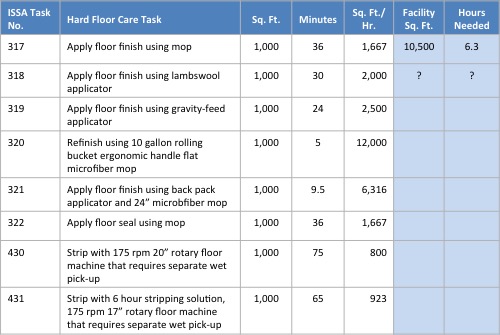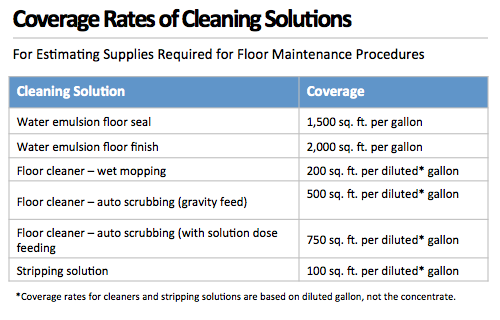
Planning Your Summer Floor Program: A Tactical Punch List
It’s hard to believe but summer is right around the corner. It’s time to start setting your mind to the maintenance projects on your warm weather list.
Because summer is downtime for schools and certain buildings with seasonal traffic patterns, it’s an excellent time to do the heavy lifting tasks needed in a thoughtful floor care program. There are many things to consider and much work to be done. We’ve broken it down into a manageable punch list to give you a proactive approach. You may also want to first review some of the floor care resources we’ve made available.
Let’s get started…
Do a survey of your floors. Start with a floor plan of your building in hand. Physically walk through your facility and determine what types of flooring you have. Tile flooring, wood flooring, carpet, gym floors, rubberized floors, marble, terrazzo … they all require unique cleaning products and equipment. Log all of the types of flooring on your floor plan with the dimensions of each area.
Workload your building. Plug in dimensions of rooms, hallways, classrooms, gyms and other areas so you can calculate square footage on the surfaces you need to cover this summer. Then break down the type of flooring by the work it needs. For example, on vinyl composition tile (VCT), you may be doing a full strip and recoat in certain areas, while in other areas you may only need a top scrub and recoat. The labor hours will vary depending on the task. If you don’t have workloading software there are a number of versions available to help facility managers in understanding their processes and how to increase ROI.
Determine the scope of work. The result of your documentation above should be a scope of work, broken down by task. For example, you may determine that you need to strip and recoat 10,000 square feet of VCT. Once you know this, consult ISSA’s Cleaning Times Booklet and record specific tasks and times along with your square footages. This will help you later calculate the number of labor hours needed for each task. To give you an idea, here are some common hard floor care tasks and their estimated cleaning times per 1,000 square feet:
Calculate how much in supplies you need for each task. After determining the square footage of each type of flooring in your facility, along with the tasks that need to be done for those areas this summer, it’s time to look at your supplies list. Prepare a list of chemicals (including the right floor finish), equipment, accessories, and cleaning supplies you will need for each specific task, including quantities. How many black stripping pads do you need, what supplies do you need to lay the floor finish, etc. Use manufacturer suggested square foot coverage or the chart below for floor finish and other chemicals. Take an inventory of what you have on hand and determine what you will need to order to complete your supplies list.
Evaluate your equipment. Evaluate your equipment similar to your supplies inventory. Determine whether any maintenance needs to be done, repairs need to be made, or whether new equipment purchases could help improve your labor efficiency and productivity. Be sure to bring equipment in for repair now before the start of summer, so you’re ready to roll as soon as school’s out.
Plan your labor hours. Fill in the last two columns on the chart above for all of your identified tasks. The last column on the worksheet is a calculation of Facility Square Feet divided by Square Feet Per Hour. Look at the scope of work you will have for the summer alongside of the equipment you have on hand. Determine the labor hours per task so you can plan the number of full time employees you will need to complete the work. Remember to plan adequate time for coats of floor finish to be applied as the summer months with high humidity will impact drying times and reduce the number of coats that can be put down in one day.
Consider your work force. Knowing what work needs to be accomplished and the experience levels of your summer staff, decide if you need to implement training. Consult your supplier and schedule times for them to come in and provide training needed on both procedures and new equipment. This will pay dividends when it’s time to do the work.
Review and refine. Review all of the aspects of your plan and make sure you are comfortable with it, then begin to implement each phase one by one.
When school’s back in session, reevaluate and record notes for ideas and improvements you may want to make for the following summer!


